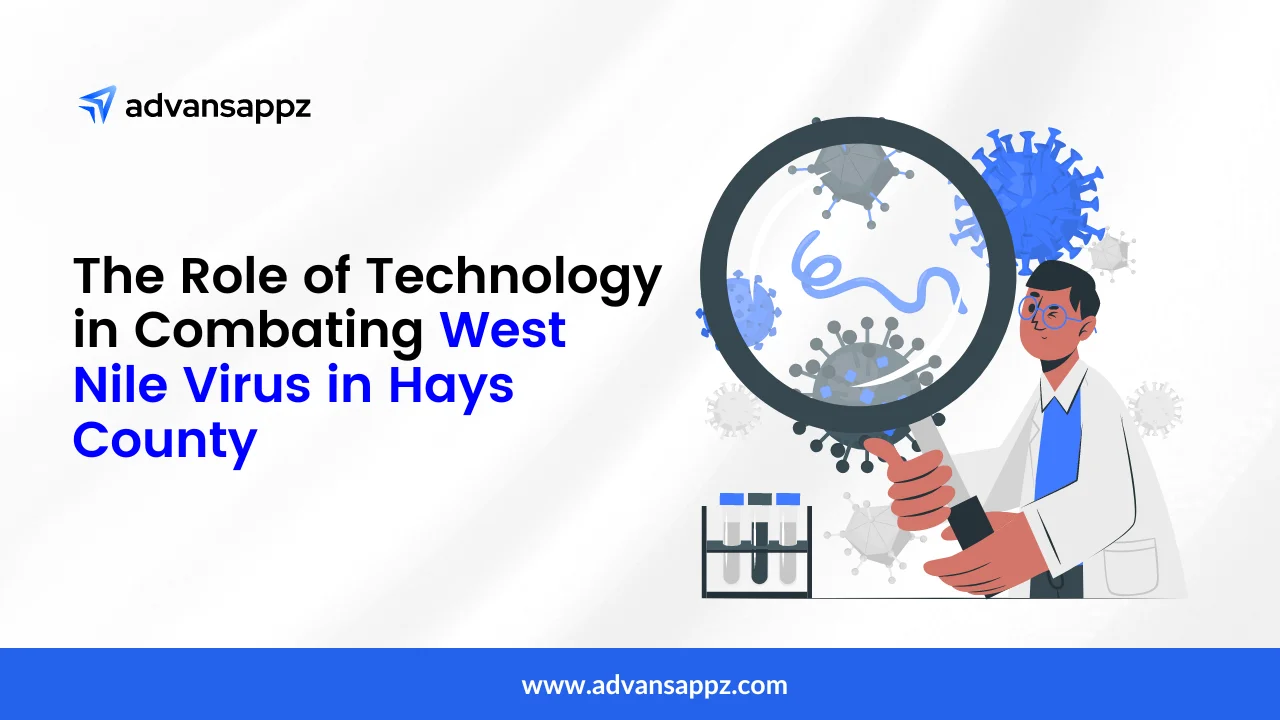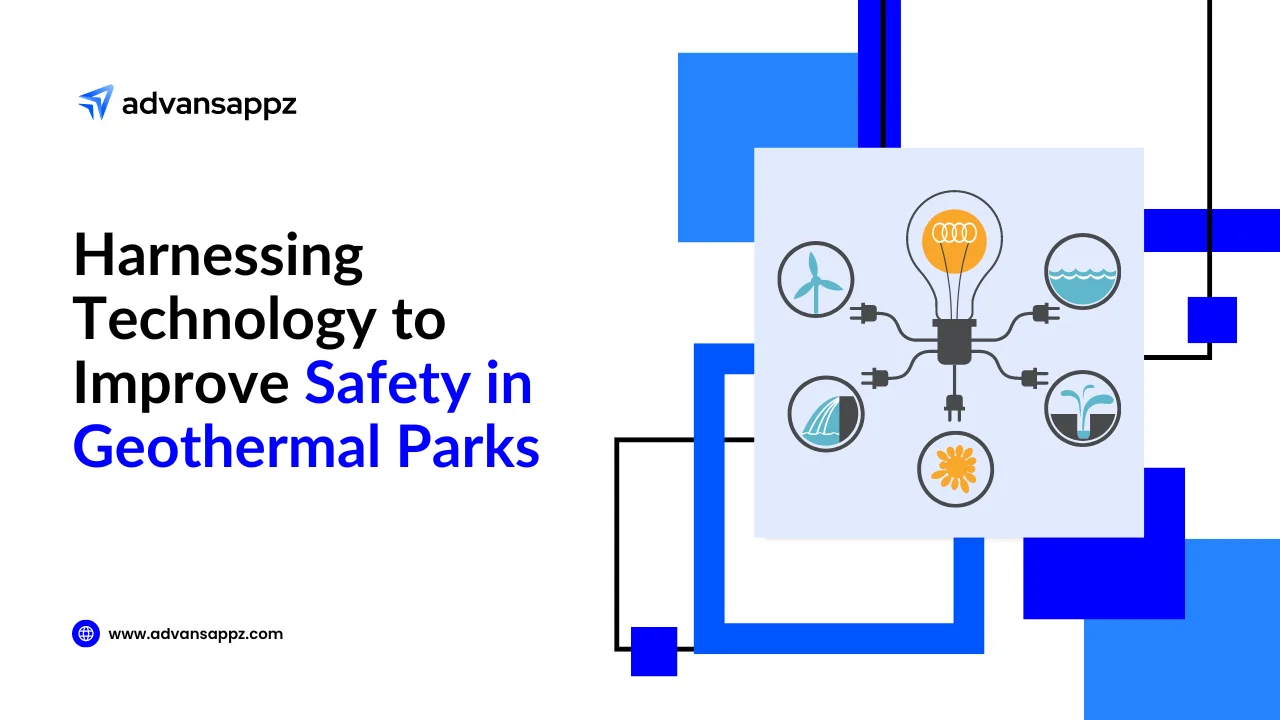With increased digitization, businesses are generating massive amounts of data. But, data is only useful if it can be analyzed and turned into actionable insights. This is where machine learning comes in as a solution. According to IBM, 2.5 quintillion bytes of data are created daily, and the pace is increasing.
With such an enormous volume of data, it’s not easy to make informed decisions without the help of advanced technologies like machine learning. Machine learning solutions are becoming increasingly popular as they provide businesses with valuable insights from their data. In this blog, we will explore how machine learning solutions improve decision-making and the methods and types of machine learning used.
What is Machine Learning?
Machine learning is a part of AI (Artificial intelligence), which uses algorithms to learn patterns and make predictions or decisions based on data. It is a data-driven approach that uses statistical techniques to enable machines to improve their performance on a specific task by learning from data. Machine learning solutions can be used to identify patterns in data, recognize images, detect fraud, and make predictions.
There are three main machine learning types:

Supervised Learning:
It involves training a machine learning model using labeled data. Labeled data; a data that has been tagged or categorized with specific outcomes. For example, a customer demographics and purchase history dataset might be marked with information about whether each customer is a high-value customer.
The machine learning model is trained on this labeled data and learns to recognize patterns that lead to specific outcomes. Once the model has been trained, it can predict new data. For example, a supervised learning model trained on customer demographics and purchase history could be used to predict which customers are likely to become high-value customers in the future.
Unsupervised Learning:
Unsupervised learning involves training a machine learning model on unlabeled data. This type of learning is used when there is no predefined outcome or label for the data. Instead, the machine learning model is left to identify patterns and relationships within the data. Unsupervised learning is often used for tasks such as clustering or anomaly detection. For example, an unsupervised learning model could be used to group customers into different segments based on their purchase history or behavior.
Reinforcement Learning:
Reinforcement learning involves training a machine learning model through trial and error. The model is rewarded or penalized based on its actions and learns to optimize its actions over time to maximize the reward. Reinforcement learning is often used in tasks such as game playing or robotics. For example, a reinforcement learning model could be trained to play a game of chess by playing thousands of games against itself and learning from its mistakes.

How Machine Learning Helps with Better Decision-Making:
1. Increased Speed and Accuracy:
One of the major advantages of machine learning solutions is that they can process vast amounts of data quickly and accurately. This allows businesses to make real-time informed decisions, improving operational efficiency and reducing costs.
For example, a machine learning model prepared on medical data could be used to predict the likelihood of a patient developing a particular disease. The model could consider a range of factors, such as the patient’s age, gender, medical history, and lifestyle factors. Based on this information, the model could provide a more accurate prediction of the patient’s risk of developing the disease than a human doctor could.
2. Predictive Analytics
Machine learning solutions can analyze historical data to predict future events. Predictive analysis uses data analytics and machine learning algorithms to predict future events. It is a valuable tool for businesses to identify patterns and trends in their data, which can help them forecast future outcomes, make informed decisions, and gain a competitive edge.
The predictive analysis involves:
- Collecting and cleaning data.
- Selecting relevant features.
- Choosing an appropriate algorithm.
- Training the model.
- Evaluating its accuracy.
It can be used in various applications, such as customer behavior prediction, fraud detection, equipment failure prediction, and healthcare prognosis. Predictive analysis helps businesses optimize their operations, increase revenue, and reduce costs by providing valuable insights into future events.
For example, a business can use machine learning algorithms to predict customer behavior, such as whether a customer is likely to churn or make a purchase. This helps companies to make proactive decisions and take action to prevent churn or increase sales.
3. Personalization:
Personalization is the procedure of tailoring products, services, or experiences to meet individual customers’ specific needs and preferences. It involves collecting and analyzing customer data, such as browsing history, purchase history, and demographic data, to provide customized recommendations and experiences. Personalization can be applied in various industries, such as retail, healthcare, and finance, to enhance customer satisfaction, boost customer loyalty, and drive revenue growth.
For example, a retailer can use personalization to recommend products based on a customer’s previous purchases or browsing history. In contrast, a healthcare provider can use personalization to tailor treatment plans to a patient’s needs. By providing customers with personalized experiences, businesses can distinguish themselves from their competitors, improve client retention, and improve their bottom line.
4. Fraud Detection
It uses machine learning algorithms and statistical techniques to identify and prevent fraudulent activities. It is a valuable tool for businesses to protect themselves from financial losses and damage caused by fraudulent transactions. Fraud detection involves analyzing large volumes of data, such as transaction history, customer behavior, and device information, to identify patterns and anomalies that indicate fraudulent activity. The algorithms can then flag suspicious transactions or behaviors for further investigation or block them outright.
Fraud detection can be applied in various industries, such as finance, e-commerce, and insurance, to prevent payment fraud, identity theft, and insurance fraud. By leveraging machine learning, businesses can improve their fraud detection capabilities, reduce false positives, and mitigate the risk of financial loss due to fraudulent activities.
For example, a bank can use machine learning algorithms to detect unusual spending patterns and prevent fraudulent transactions. This helps businesses save money and protect their reputation.
5. Reduced Costs
Machine learning solutions can also help to reduce costs by automating specific tasks and processes. This can include tasks such as data entry, analysis, and reporting.
For example, a machine learning model could be used to automate detecting fraudulent transactions. By analyzing patterns in transaction data, the model could identify transactions that are likely to be fraudulent. This could help businesses to reduce the cost of fraud detection and prevention.
Examples of Machine Learning Solutions in Action
Many examples of machine learning solutions are used to improve decision-making in various industries. Here are just a few examples:

Machine learning solutions in Healthcare:
Machine learning solutions are used in healthcare to improve patient outcomes and reduce costs. For example, machine learning models can be used to analyze patient data and identify patterns that could indicate the onset of a particular disease. This could allow doctors to diagnose and treat patients more quickly and effectively.
Machine learning in finance:
Machine learning solutions are also being used in finance to detect fraud and improve risk management. For example, machine learning models can analyze transaction data and detect patterns that reveal fraudulent activity. This could help banks and other financial institutions to detect and prevent fraud more effectively.
Retail:
Machine learning solutions are being used to improve customer engagement and loyalty. For example, machine learning models can be utilized to analyze customer data and deliver personalized recommendations and offers to each customer. This could help retailers to improve customer satisfaction and increase sales.
Case Studies
Case Study: Amazon’s Product Recommendations
Background: Amazon, the world’s largest e-commerce platform, uses machine learning algorithms to provide personalized product recommendations to its customers.
Stats:
- Amazon’s recommendation engine contributes to approximately 35% of its total revenue (McKinsey).
- Machine learning algorithms process billions of data points every day to generate relevant product suggestions (Amazon Science).
Impact:
- Personalized product recommendations improve the overall shopping experience, leading to increased customer satisfaction and loyalty.
- The machine learning system analyzes user behavior, purchase history, and browsing patterns to suggest products that align with individual preferences, leading to higher conversion rates.
- Amazon’s recommendation engine has significantly contributed to the company’s revenue growth and market dominance.
Case Study: Tesla’s Autopilot
Background: Tesla, a pioneer in the electric vehicle industry, utilizes machine learning algorithms in its Autopilot feature to enable semi-autonomous driving capabilities.
Stats:
- Tesla vehicles with Autopilot have collectively driven over 4 billion miles as of 2021 (Reuters).
- The Autopilot system processes data from eight surround cameras and 12 ultrasonic sensors to make driving decisions (Tesla).
Impact:
- Tesla’s Autopilot enhances road safety by assisting drivers with tasks such as lane-keeping and adaptive cruise control.
- The continuous collection and analysis of driving data from Tesla vehicles improve the system’s performance and safety over time through machine learning iterations.
- Autonomous features contribute to a higher demand for Tesla vehicles, positioning the company as a leader in the autonomous driving space.
Case Study: Airbnb’s Dynamic Pricing
Background: Airbnb, a global online marketplace for lodging and travel experiences, leverages machine learning algorithms for dynamic pricing of its listings.
Stats:
- Airbnb has over 7 million listings worldwide (Statista).
- Machine learning algorithms process a wide range of data, including location, historical booking data, seasonality, and local events, to determine optimal pricing (Airbnb Engineering & Data Science).
Impact:
- Dynamic pricing allows hosts to optimize their rental prices based on market demand, increasing their revenue potential.
- Guests benefit from competitive and fair pricing based on real-time market conditions, leading to a better booking experience.
- Airbnb’s dynamic pricing algorithm has significantly increased the platform’s revenue and competitiveness in the online travel industry.
Also Check:- AI Consulting: A complete guide
Conclusion
Machine learning solutions are transforming how businesses operate by providing valuable insights from data. They improve decision-making by increasing speed and accuracy, enabling predictive analytics, personalization, and fraud detection. With the increasing volume of data generated daily, machine-learning solutions are becoming essential for businesses to make accurate, informed decisions and stay ahead of the competition.
advansappz is a leading machine-learning solution provider helping businesses transform their operations by leveraging the power of data. With its state-of-the-art machine-learning algorithms and tools,
Frequently Asked Questions
Artificial Intelligence (AI) revolutionizes decision-making by analyzing vast data, offering predictive insights, and reducing biases. AI enables real-time support, automates routine decisions, and personalizes recommendations for decision-makers. It plays a vital role in risk management and finds applications in various industries, including healthcare, finance, and marketing. The power of AI lies in its ability to process data swiftly and provide accurate foresight, ultimately empowering decision-makers to make informed choices that drive success. With AI at their side, decision-makers can navigate complexities, seize opportunities, and stay ahead in the rapidly evolving world.
Decision-making in machine learning refers to the process by which an algorithm or model makes choices based on data inputs and learned patterns. In the context of supervised learning, decision-making involves predicting or classifying new data points based on the patterns learned from labeled training data.
When training a machine learning model, the algorithm learns to identify relationships and patterns in the data. These patterns are then used to make decisions or predictions on unseen data. For example, in a binary classification problem, the model may make decisions such as classifying an email as spam or not spam, identifying whether an image contains a cat or a dog, or predicting whether a loan applicant is likely to default or not.
The decision-making process in machine learning can be influenced by various factors, including the choice of algorithm, the quality and quantity of training data, and the features used to represent the data. The goal is to create a model that can generalize well to new, unseen data and make accurate decisions in real-world scenarios.
Machine learning can solve a wide range of problems across various industries and domains. Some of the key problems that machine learning can address include:
-
Classification: Machine learning algorithms can classify data into different categories or classes. For example, they can classify emails as spam or not spam, detect fraudulent transactions, or identify the sentiment of customer reviews.
-
Regression: Machine learning can predict continuous numerical values based on input data. This is useful in applications such as predicting housing prices, stock market trends, or future sales figures.
-
Clustering: Machine learning can group similar data points together based on their characteristics, helping to identify patterns or segment customers based on behavior.
-
Recommendation Systems: Machine learning can suggest relevant products, movies, or content based on user preferences and past interactions, as seen in platforms like Netflix and Amazon.
-
Natural Language Processing (NLP): Machine learning techniques enable machines to understand, interpret, and generate human language. This is used in chatbots, language translation, sentiment analysis, and more.
-
Image and Speech Recognition: Machine learning can identify objects, faces, or patterns in images and videos. It can also transcribe speech and convert it into text, facilitating voice assistants and speech-to-text applications.
-
Anomaly Detection: Machine learning can identify unusual patterns or outliers in data, which is valuable in fraud detection, fault diagnosis, or identifying abnormal behaviors in systems.
-
Time Series Analysis: Machine learning can analyze historical data to make predictions about future trends and events. This is useful in forecasting stock prices, weather patterns, and demand for products.
-
Optimization Problems: Machine learning can be applied to optimize complex processes, such as supply chain management, resource allocation, and route optimization.
-
Healthcare Diagnostics: Machine learning algorithms can aid in medical diagnostics, detecting diseases, and recommending personalized treatment plans based on patient data.
-
Autonomous Vehicles: Machine learning plays a crucial role in self-driving cars, enabling them to perceive their environment, make decisions, and navigate safely.
-
Game Playing: Machine learning has been utilized in creating AI agents that can play and excel in games like Chess, Go, and video games.
The four basics of machine learning are:
-
Data Collection: Machine learning algorithms rely on data to learn patterns and make predictions. The first step is to gather relevant and representative data from various sources. The quality and quantity of data can significantly impact the performance of the machine learning model.
-
Data Preprocessing: Once the data is collected, it needs to be preprocessed to ensure it is in a suitable format for the machine learning algorithm. Data preprocessing involves tasks like cleaning the data to handle missing values and outliers, scaling or normalizing numerical features, and encoding categorical variables.
-
Model Building: After data preprocessing, the next step is to select an appropriate machine learning algorithm or model. There are various types of models, including decision trees, support vector machines, neural networks, and more. The model is trained on the preprocessed data, and it learns from the patterns and relationships present in the training data.
-
Model Evaluation and Deployment: Once the model is trained, it needs to be evaluated to assess its performance on unseen data. This is typically done using a separate set of data called the test set. The evaluation metrics can vary depending on the type of problem (classification, regression, etc.). If the model performs well, it can be deployed in real-world applications to make predictions or decisions.
Machine learning solutions refer to applications and systems that utilize machine learning algorithms and techniques to solve specific problems or perform tasks autonomously. These solutions are designed to learn from data, identify patterns, and make predictions or decisions without explicit programming.
Machine learning solutions can be categorized into various types based on the nature of the problems they address:
-
Classification Solutions: These solutions involve categorizing data into different classes or categories. For example, email spam filters use classification algorithms to classify emails as spam or not spam.
-
Regression Solutions: Regression solutions predict continuous numerical values based on input data. They are commonly used in scenarios such as predicting housing prices or stock market trends.
-
Clustering Solutions: Clustering solutions group similar data points together based on their characteristics. These are helpful for pattern recognition and customer segmentation.
-
Recommendation Systems: Recommendation systems use machine learning to suggest relevant items or content to users based on their preferences and past behavior, as seen in platforms like Netflix and Amazon.
-
Natural Language Processing (NLP) Solutions: NLP solutions enable machines to understand, interpret, and generate human language. They are used in chatbots, language translation, sentiment analysis, and more.
-
Image and Speech Recognition Solutions: These solutions can identify objects, faces, or patterns in images and videos. They also include speech recognition systems that transcribe speech into text.
-
Anomaly Detection Solutions: Anomaly detection solutions identify unusual patterns or outliers in data, which is valuable in fraud detection, fault diagnosis, or abnormal behavior detection.
-
Time Series Analysis Solutions: Time series analysis solutions analyze historical data to make predictions about future trends and events, commonly used in forecasting stock prices and weather patterns.
Machine learning is a subset of artificial intelligence (AI) that enables computer systems to learn from data and improve their performance without being explicitly programmed. In other words, machine learning algorithms can identify patterns and relationships in data, allowing them to make predictions or decisions based on new, unseen data. Here’s an example to illustrate how machine learning works:
Example: Email Spam Filter
Consider a scenario where you want to develop an email spam filter to automatically classify incoming emails as spam or not spam. Instead of manually writing rules to identify spam emails, you can use machine learning to create a more adaptive and accurate solution.
-
Data Collection: You start by collecting a large dataset of emails, each labeled as either spam or not spam. The dataset should contain a diverse range of emails with different characteristics.
-
Data Preprocessing: Before training the machine learning model, you preprocess the data to remove any irrelevant information, handle missing values, and convert the text content of the emails into numerical representations that the algorithm can understand.
-
Model Building: Next, you choose a machine learning algorithm suitable for the classification task. One commonly used algorithm for this scenario is the “Naive Bayes” algorithm. You then feed the preprocessed data into the algorithm, which learns from the patterns and features in the emails associated with spam and non-spam.
-
Model Training: The algorithm uses the labeled data to calculate probabilities and create a model that can distinguish between spam and non-spam emails.
-
Model Evaluation: To assess the model’s performance, you use a separate set of emails that the algorithm has never seen before (a test set). The model predicts whether each email is spam or not, and you compare the predictions with the actual labels to measure its accuracy.
-
Deployment: Once the model demonstrates satisfactory performance, you deploy it in your email system. Now, as new emails arrive, the spam filter uses the machine learning model to automatically classify each email as spam or not spam based on its content and characteristics.
-
Continuous Learning: The beauty of machine learning is its ability to adapt and improve over time. As users interact with the email system and provide feedback on misclassified emails, the model can learn from these updates and become more accurate in identifying spam.












